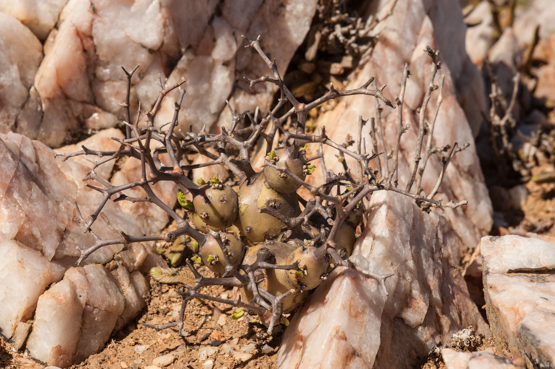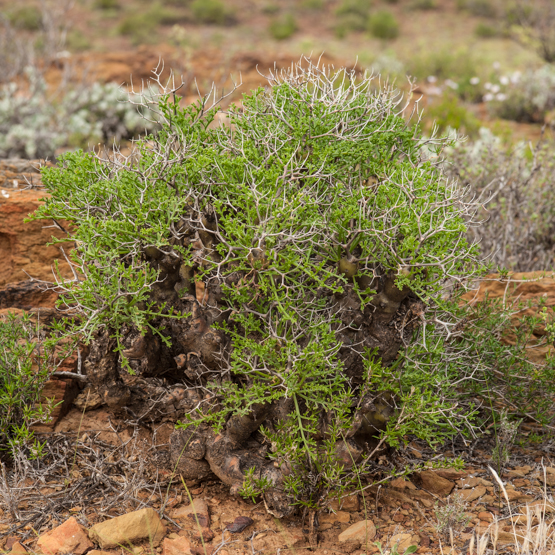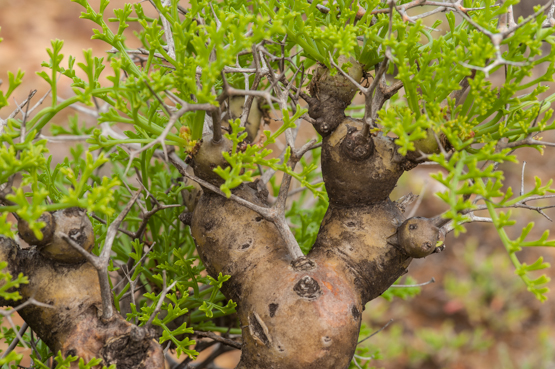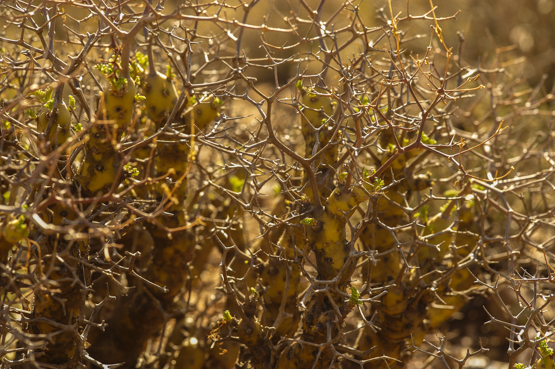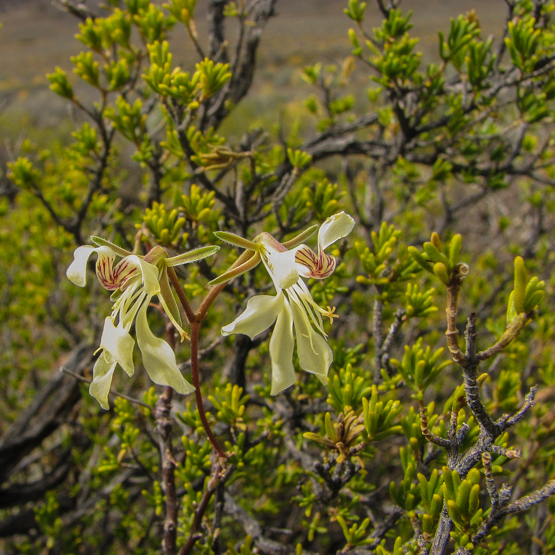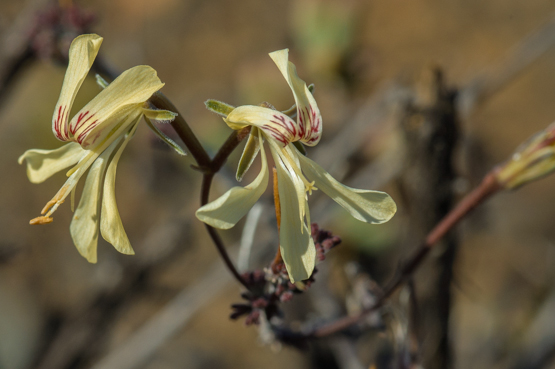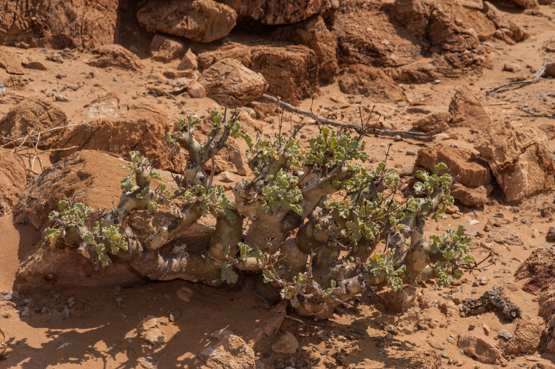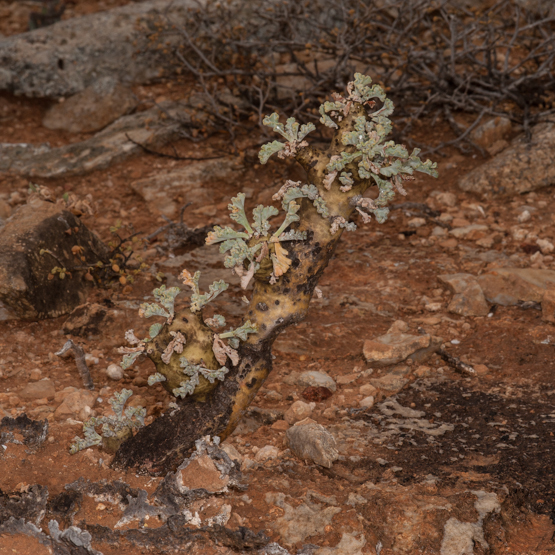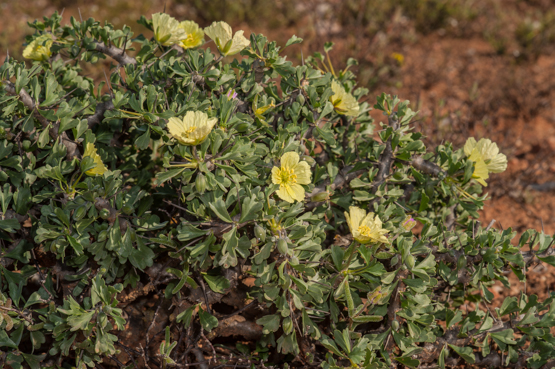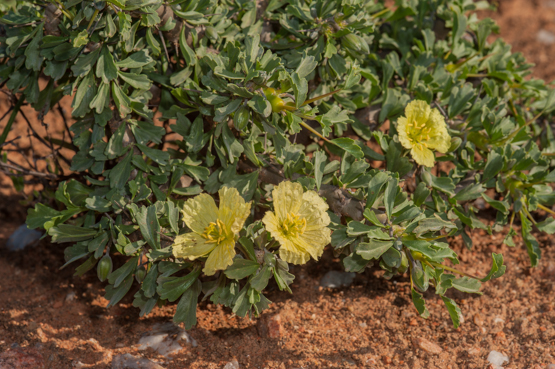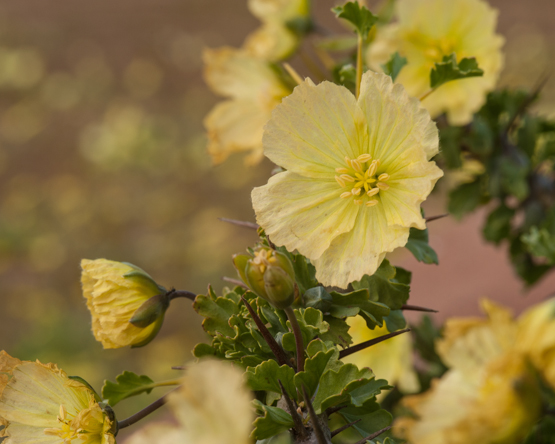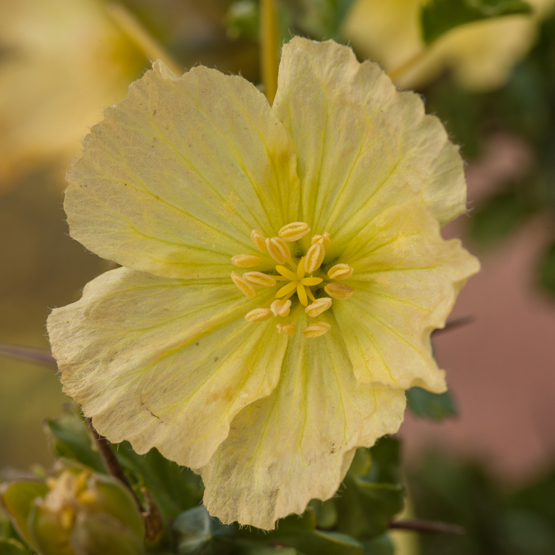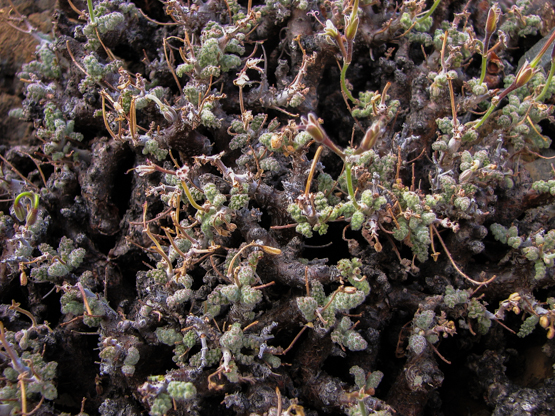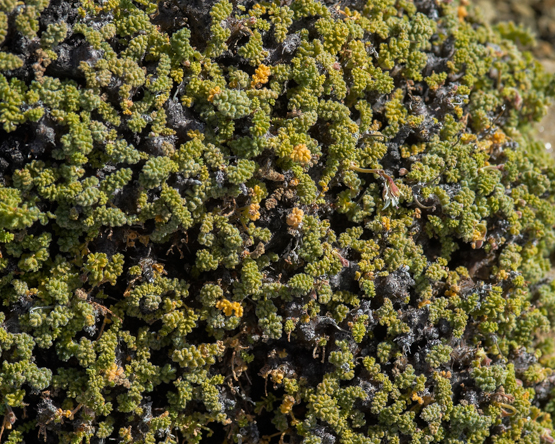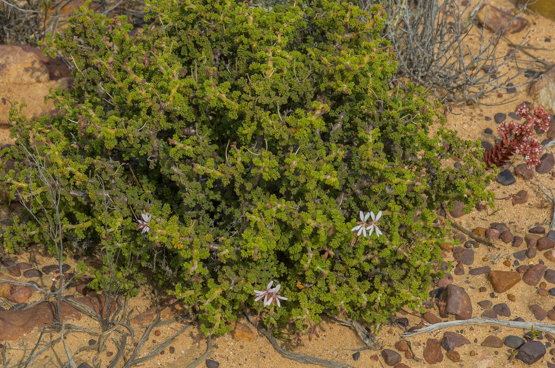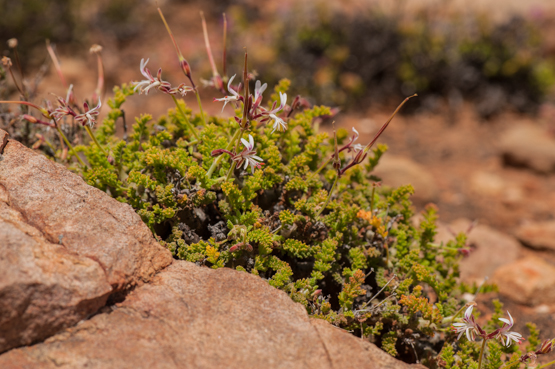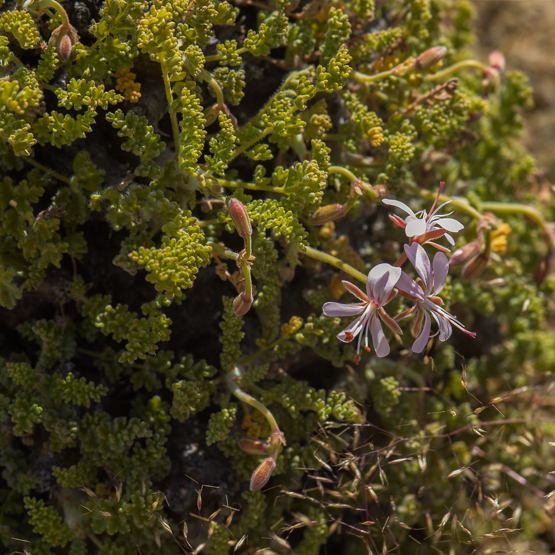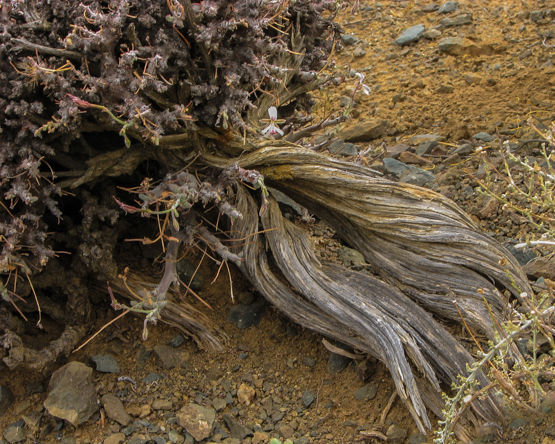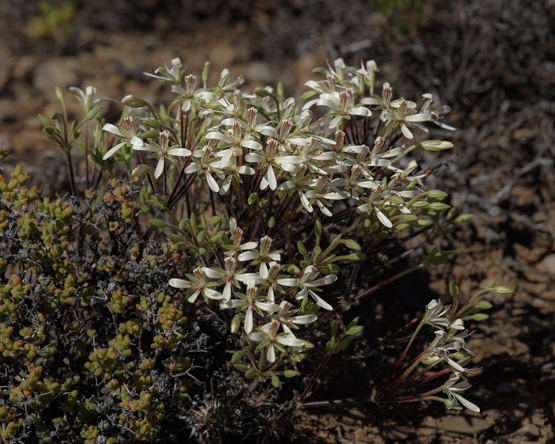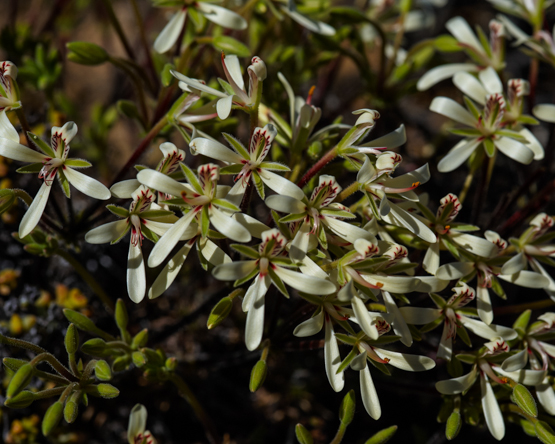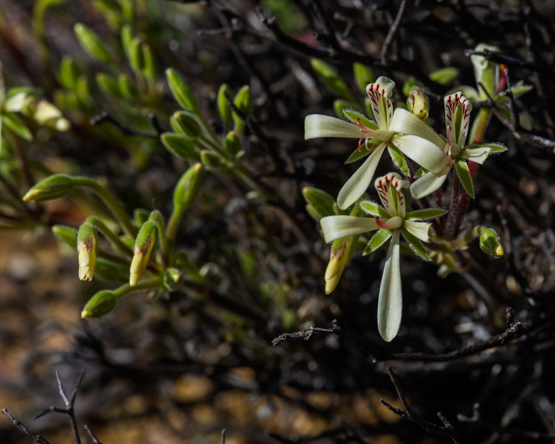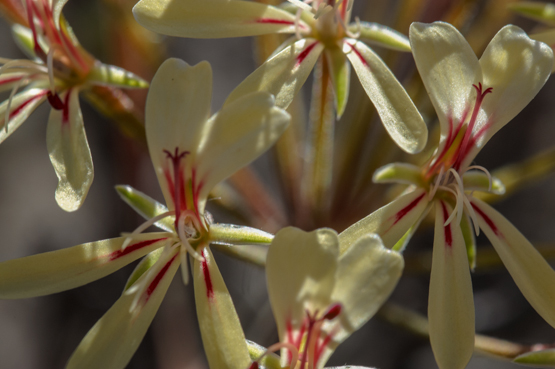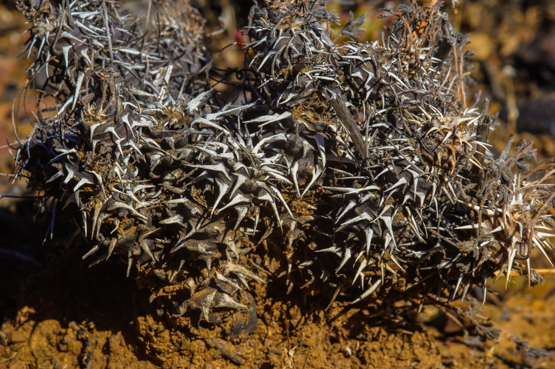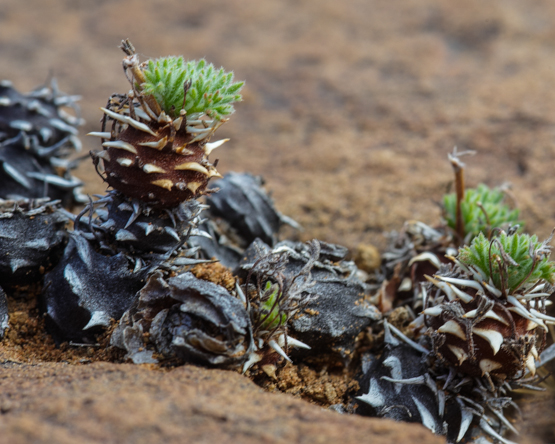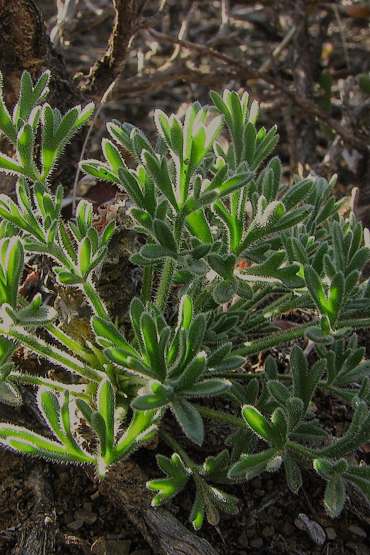With its thick stems and a height of up to 1 meter, this species is one of the giants among the succulent Pelargoniums. Only P. carnosum is occasionally taller (up to 1.2 m). The species is characterized by its large, much branched inflorescences which become hard and spine-like and will persist for at least a year. The flowers appear from March to November.
The plants occur sporadically from southern Namibia to the western Great Karoo and the Little Karoo on dry, hot flats and slopes, often in crevices of rocky outcrops.
Tag: Geraniaceae
Pelargonium karooicum
“This species has little horticultural appeal, always looking as if it were more than half dead.”
How about that for a recommendation? It comes from “Pelargoniums of Southern Africa” vol. 3. and yes, if you have space for just one more Pelargonium in your collection, this will not be high on your wants list.
But if you are in the field somewhere between January and April, when very little else is flowering, the white, pale yellow or pink flowers sticking out from a shrub, are a welcome sight.
The plants are shrublets of up to 40 cm tall. with thin, slightly woody stems and parsley-like, somewhat succulent leaves. The species is widely distributed from the vicinity of Kleinzee in Namaqualand to Oudtshoorn in the eastern Little Karoo. This is part of the winter rainfall area, with very hot summers and cool, but mainly frost free winters. Without flowers the plants are difficult to find, as they are always growing within other shrubs.
Pelargonium klinghardtense (2)
Pelargonium klinghardtense (1)
This species occurs on both sides of the Orange River, from the Klinghardt Mountains in the northwest to Witputs in the east. With an annual rainfall of about 70 or 80 mm (occurring in winter) this is a very dry area. In many years there is even hardly any rain at all. The good news is that the meager amount of rain is supplemented by early morning mists throughout the year.
The plants grow on or against rocky outcrops, more or less in the open. They flower mainly between May and September.
Monsonia ciliata Part 2
Monsonia (Sarcocaulon) ciliata Part 1
This planr is only known from northwestern Namaqualand, where it grows in the coastal plain between the mountains and the sea, from Lekkersing southwards to Wallekraal. The plants are usually not taller than 18 cm. The flowers are about 3.5 cm in diameter and are characterized by the cilia along the rim of the petals. According to literature the flowers appear in March, September and in summer, but all but one of the pictures shown here and in the next post were made in July and August.
Pelargonium alternans (2)
Pelargonium alternans (1)
One can come across this species from the Bokkeveld Mountains to near Prince Albert on sandstone, shale and quartz slopes and outcrops. The rainfall in this area is between 100 and 200 mm a year, mainly during winter. Although the summers are very hot, there is often some frost in winter.
The plants may become up to 40-50 cm tall and wide and can apparently get very old. (See picture 4)
Flowering is mostly from April to January, but may occur at any time after rain.
Pelargonium hystrix (2)
Pelargonium hystrix (1)
Hystrix means porcupine in Greek and what a nice descriptive name that is for this plant. The stems are armed with spines, which in this case are in fact persistent stipules (outgrowths at the base of a leaf stalk).
The species occurs in the western part of the Karoo, from Calvinia in the north to Nougaspoort (halfway between Touwsrivier and Montagu) in the south. Usually the plants grow between and underneath bushes, sometimes in the open. The area receives mainly winter rain (100-200mm per year) and although it can become very hot in summer,
the winters are cool, usually with frost at night.
To be continued.
.
